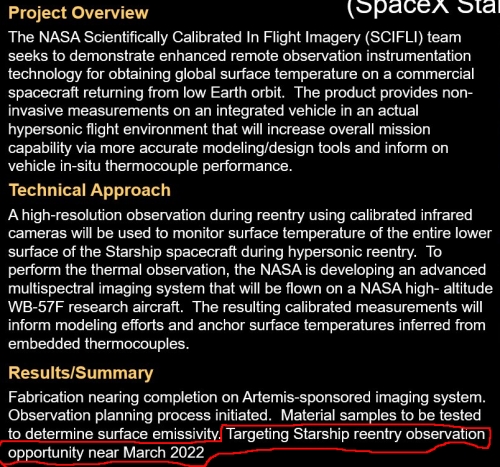Surprise! FAA delays SpaceX approval at Boca Chica another month
As I have been predicting now for months, the FAA today announced that it is once again delaying approval of its environmental reassessment of SpaceX’s Boca Chica facility one more month, to May 31, 2022.
This is the fifth time since December that the FAA has delayed the release of the environmental assessment. When the first delay was announced in December 2021, I predicted that this stone-walling by the government will likely continue for many months, and delay the first orbital launch of Starship “until the latter half of ’22, if then.”
Since then it has become very clear that the other federal bureaucracies at NOAA and Fish & Wildlife which must sign off on the approval are hostile to Elon Musk, SpaceX, and Starship, and are acting to block this approval, with this stone-walling having the unstated support of the Biden administration. When the third delay was announced at the end of February, I predicted no approval would ever occur, that the Biden administration wants to reject the reassessment and force the issuance of a new environmental impact statement, a process that could take years. To do this before the November election however will cost votes, so the administration would instead delay the approval month by month until November.
This prediction has been dead on right, unfortunately. Expect more month-by-month delays until November, when the Biden administration will then announce — conveniently just after the election — the need for a new impact statement requiring years of study.
The one hope to stop this government intransigence will be a complete wipe-out of the Democratic Party in Congress in those November elections. A strong Republican Congress with large majorities in both houses could quickly force the Biden administration to back down on many issues, including this effort to shut SpaceX down in Texas.
As I have been predicting now for months, the FAA today announced that it is once again delaying approval of its environmental reassessment of SpaceX’s Boca Chica facility one more month, to May 31, 2022.
This is the fifth time since December that the FAA has delayed the release of the environmental assessment. When the first delay was announced in December 2021, I predicted that this stone-walling by the government will likely continue for many months, and delay the first orbital launch of Starship “until the latter half of ’22, if then.”
Since then it has become very clear that the other federal bureaucracies at NOAA and Fish & Wildlife which must sign off on the approval are hostile to Elon Musk, SpaceX, and Starship, and are acting to block this approval, with this stone-walling having the unstated support of the Biden administration. When the third delay was announced at the end of February, I predicted no approval would ever occur, that the Biden administration wants to reject the reassessment and force the issuance of a new environmental impact statement, a process that could take years. To do this before the November election however will cost votes, so the administration would instead delay the approval month by month until November.
This prediction has been dead on right, unfortunately. Expect more month-by-month delays until November, when the Biden administration will then announce — conveniently just after the election — the need for a new impact statement requiring years of study.
The one hope to stop this government intransigence will be a complete wipe-out of the Democratic Party in Congress in those November elections. A strong Republican Congress with large majorities in both houses could quickly force the Biden administration to back down on many issues, including this effort to shut SpaceX down in Texas.

